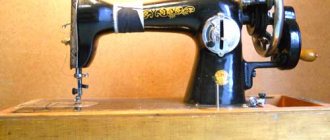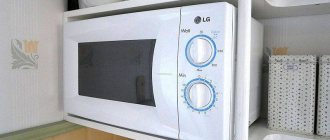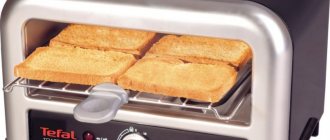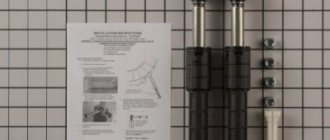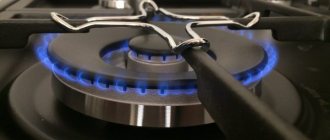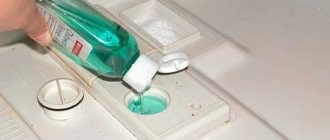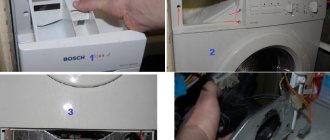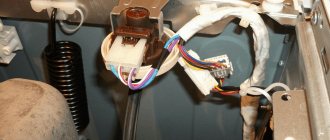Design and operating principle
The operating principle of the device is based on the production of steam from water poured inside thanks to a heating element. It is this element that is most often subject to breakdowns. If there is no liquid in the tank, the heating element should turn off automatically, but in the event of a failure, it burns out and the device fails.
All types of steamers have a similar design and practically do not differ in external features. The main part of the devices is the housing, which houses the steam generation system. A fluid reservoir is attached to the body. The devices are also equipped with a steam hose with an iron, inside which steam moves. An additional element is a stand where there is a mount for a steam iron and clothes hangers. The type of racks may differ in different models of steamers.
Everything can be learned by comparison: the advantages and disadvantages of a manual steamer
All steamers are divided into three types:
- manual - the lightest and most compact,
- vertical - more powerful than manual ones, but have a bulky design,
- multifunctional - universal steamers that can handle almost any household job: from ironing to washing windows.
To understand what is the advantage of a hand-held steamer over other types of this electrical appliance, let’s look at its positive qualities:
- The main advantage of manual models is size and weight. Floor samples are bulky and inconvenient to store. The compactness and ease of transportation of a hand-held steamer will make it indispensable when traveling,
- The second significant advantage is battery or battery operation. You can put your clothes in order even in the field in the complete absence of electricity. Other types require an electrical outlet,
- price. As a rule, hand-held steamers are very inexpensive, so almost anyone can afford this electrical appliance. Floor-standing and multifunctional steamers will cost a pretty penny,
- kettle-shaped steamers can be successfully used to boil water.
If we talk about the disadvantages of a hand steamer, it is worth dwelling on the following points:
- power. Almost all hand-held steamers belong to the category of low-power household appliances. This affects the amount of steam produced. For example, the average is only 15 ml per minute. This amount of hot air will not be able to cope with dense fabric, for example, denim,
- tank volume. In manual models, the boiler is most often designed for 50–200 ml of water. It is clear that this amount is barely enough for 15–20 minutes of continuous work. Floor steamers are equipped with large tanks, the volume of which can reach up to 3 liters. This amount is enough for 2 hours of work,
- no steam boost. This feature is only available on models with pump mode. A manual steamer belongs to the so-called gravity models, so it will be impossible to smooth out, for example, a strong crease with a powerful steam blast.
Basic Troubleshooting Methods
The procedure for repairing a device depends on the specific type of failure. Before you begin repairing the steamer, you need to conduct a comprehensive diagnosis and understand the characteristics of the malfunction. It is also worth studying in advance information about the most typical equipment breakdowns.
Lack of steam
The reason why the device does not release steam is most often the formation of scale. As a result, the heating element transmits heat less well and the steam channels become clogged. This malfunction does not require major repairs, and to solve the problem it is enough to clean it mechanically or chemically.
See also
Causes of sofa creaking and how to fix it, what to do at home
Mechanical cleaning
For mechanical cleaning, you will need to disassemble the device. Due to its simple design, a regular screwdriver will be enough. The steamer is disassembled in the following way:
- Disconnect the electrical wiring and fluid supply system.
- Remove the tubular electric heater and clean off the scale.
- Rinse the tank with a solution of water and food vinegar. You can also use a specialized anti-scale solution created for steamers.
When disassembling the case, it is recommended to draw a schematic drawing or take photographs of each step. This will help to properly assemble the device after descaling, without leaving any unnecessary parts.
Chemical method
The advantage of the chemical method is that you do not need to disassemble or even disconnect the device from the network. To get rid of the accumulated scale, the tank is filled with a mixture of water and vinegar essence with a concentration of 3%, maintaining equal proportions. Then the device is turned on and the solution is heated until steam forms, waiting until the liquid has completely evaporated. As a result, not only the heating element will be cleaned, but also the openings of the atomizer and tube, which are also often covered with scale.
If the built-in heating element, atomizer and conductive tubes are not covered with scale, and the device still does not release steam, you will need to contact a specialist.
It is recommended to use the services of the service center of the company that produced the steamer.
Pump repair or replacement
A common reason why steam does not flow and the device requires repair is a broken pump. In this situation, it is easier to use professional help, but situations may arise when you have to do the repairs yourself. Opening the case is not difficult, but it will be necessary to turn it on in a disassembled state, which can lead to dangerous consequences.
To disassemble the structure, you must take precautions and follow step-by-step instructions. Since the pump is installed parallel to the heating element, the following steps are performed for repair:
- open the case;
- connect the device to the network;
- check the voltage at the pump contacts so that it corresponds to the value specified in the attached technical documentation;
- if the contacts are working properly and voltage is present, pull out the plug from the socket;
- Using a tester, all elements of the pump are called and, if there is no signal, new windings are wound onto the motor or replacement is carried out.
See also
Step-by-step instructions for repairing a ball mixer yourself
Steam leakage
As a result of using the steamer too intensively, defects may appear on the hose. Even small cracks are enough for steam to escape through them, and not through the spray. When faced with a problem, you should immediately begin repairs, since the holes in the hose will gradually increase in size.
The optimal solution to the problem is to replace the hose. You can replace it yourself or contact a service center. It is important not to try to tape or tape the holes. Electrical tape and adhesive tape are unable to withstand the effects of heated steam, so this method of repair will only take time and will not bring results.
Water heating problem
If the water does not heat up when you turn on the device, there may be several reasons for the problem, and all of them are related to the components of the boiler. As a rule, heating does not occur due to a breakdown of the heating element, thermostat and thermal fuse. If this problem occurs, you will not be able to use the steamer for its intended purpose, since it will not convert the poured liquid into steam.
heating element
To figure out if the heater is not functioning due to scale formation or is completely burnt out, you need to disassemble the device. Dismantling is carried out in the same way as is required to clean the heating element. For diagnostic purposes, the heater is called a tester. If a breakdown is detected, repair will be impractical, so it is recommended to replace the faulty part or the entire device.
Thermostat
The thermostat in a clothes steamer is a relay made in the form of a bimetallic strip. Its purpose is to stop the supply of electric current when the heating temperature reaches a set value. If diagnostics confirm that the cause of the problem is a failed thermostat, it must be replaced.
Thermal fuse
The fuse is attached to the broiler body using a special bracket. Most often, the water in the device does not heat up precisely because the thermal fuse is broken. To diagnose and repair the element, you need to disconnect the device from the power supply and ring the wire on both sides. If there is no signal when the tester makes a call, it means the fuse has blown.
See also
How to repair metal entrance doors with your own hands
How to eliminate mechanical damage
Minor chips and cracks on the body of the device may not affect its functioning, but serious mechanical damage leads to problems in everyday use. It is almost impossible to eliminate large defects on the case, so it is better to replace the damaged element.
What criteria to consider when choosing a hand steamer
Today on the shelves of electronics stores you can find dozens of models from different manufacturers. How not to make a mistake when choosing a steamer? We recommend paying attention to the following criteria:
- power,
- heating rate,
- water tank volume,
- material of manufacture,
- number of modes,
- Extra options.
Power
Of course, the main parameter of any household electrical appliance is power. The higher the numbers, the more steam is produced per unit of time. As mentioned above, hand steamers are low-power household appliances, and 1000 W is usually the maximum. But for some models the values can reach 1300 W. With this power, the average steam production is about 25–30 ml/min. This is enough to smooth out items made from light fabrics: chiffon, silk, polyester. A hand steamer can smooth a knitted T-shirt or freshen fur, but clothes made of linen and cotton, alas, are too tough.
Heating rate
The heating rate directly depends on the power. The higher the power rating, the faster the water in the tank will heat up. The volume of the boiler will also affect the heating rate: a larger volume of water will require a longer heating time. The average rate of water heating is 2 - 3 minutes.
Tank volume
Of course, you want the poured water to be enough for the entire ironing process. But the larger the water tank, the heavier the device. Due to the fact that the device is operated strictly vertically, you will have to keep your hand suspended all the time. Agree, this is quite difficult to do if the weight of the steamer together with water is more than two kilograms. On average, the water tank has a volume of about 300 ml. This is quite enough to smooth out one or two things.
Use only distilled or special water for steamers to avoid scale formation.
Body and work surface material
The body of handheld steamers is made primarily of plastic. This is clear and logical: light, cheap material is perfect for this purpose. The water tank is most often also made of plastic, but with heat-resistant characteristics. Separately, it is necessary to say about the material used to make the iron - the working surface of the steamer. A metal or metal-ceramic iron will help you achieve better results, but plastic is lighter and much cheaper.
Number of modes
Most hand steamers are single-mode devices. They do not have a steam intensity regulator. This means that all types of fabrics will be processed equally. Some models have several modes with different steam output and adjustment for specific types of clothing, but their price is quite high. Paying more is only worth it if, due to your lifestyle or profession, you regularly have to deal with fancy materials.
Extra options
When purchasing a hand steamer, do not forget to take into account other characteristics, perhaps not the main ones, but also important:
- Please note that the weight of the electrical appliance itself will be added to the weight of water. Try to figure out whether you can keep the unit “in weight” for a long time,
- The length of the power cord must be sufficient, so consider the location of the sockets at home,
- function of auto-shut-off of the device without water - not all models can boast of this feature, which is a pity. This will help avoid overheating and damage to the steamer,
- additional attachments will help not only iron, but also clean clothes (for example, using a brush attachment),
- fixing the steam supply will help you not to keep your finger on the button all the time the steamer is working,
- A heat-resistant mitten will protect you from burns. Most often it is included with more expensive models. Ask the seller if it can be purchased separately.
In what cases should you contact specialists?
It is recommended to use the help of service center employees in situations where you cannot independently find out the causes of the malfunction or when you doubt the effectiveness of the repair. In addition, repairs may require the use of specialized equipment. The advantages of contacting a service center from the manufacturer include:
- availability in the service of parts necessary for repairing a specific type of steamer;
- fast comprehensive diagnostics, which allows you to determine the exact cause of the breakdown;
- repairs by professional employees with a quality guarantee.
What types of steamers are there?
Not so long ago, steamers were used almost exclusively in clothing factories and ateliers. They were very large, and they were not cheap, like any industrial equipment. Accordingly, there was no question at all as to whether it was possible to repair a clothes steamer at home.
Nowadays you can find a variety of steamers on sale, but they are divided into two classes:
- floor;
- manual.
Most often, the manual version is used at home. It is precisely when operating such devices that steamers sometimes require repair.
Having figured out how useful such a device is at home, you can understand whether it is worth repairing the steamer yourself or whether it is better to take it to a specialist.
Why use clean water
The cause of most steamer problems is scale, so it is important to try to prevent its occurrence. An effective way is to properly prepare the liquid. The best option is to use distilled water, which can be purchased at auto stores and pharmacies.
Since purchasing distilled water frequently is expensive, you can prepare your own water using a kettle, a water filter, and a heat-resistant container.
To prepare the liquid, you need to boil water in a kettle, pour it into a heat-resistant container, let it brew and filter the sediment. It is recommended to use a vessel with a carbon cartridge for filtering to improve the quality of the liquid.
